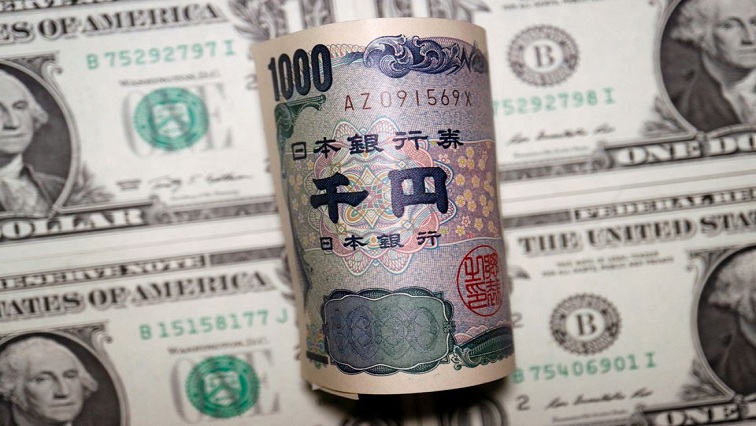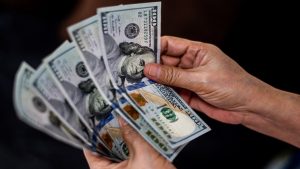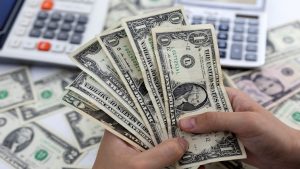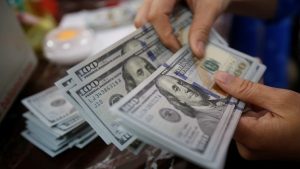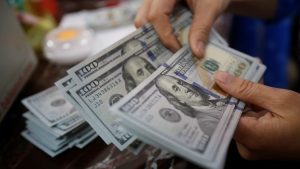The yen struggled to break away from a 34-year low on Friday and was headed for a weekly decline, while the dollar hovered near a five-month high alongside US Treasury yields as traders heavily scaled back bets for a slew of US rate cuts this year.
The euro was eyeing its sharpest weekly fall in about four months, pressured in part by a resurgent greenback and expectations that the European Central Bank (ECB) could begin easing rates in June, likely ahead of the Federal Reserve.
The yen was last marginally higher at 153.17 per dollar, languishing near a 34-year trough of 153.32 per dollar hit in the previous session on the back of a surge in US Treasury yields, which the dollar/yen pair tends to closely track.
While the 152 yen level initially proved a strong resistance for the dollar due to fear of an intervention from Japanese authorities, a hot inflation reading out of the United States on Wednesday spurred a broad rally in the greenback, which eventually broke past the key threshold.
“The break of 152 wasn’t really a break, it was more like a blast,” Tony Sycamore, a market analyst at IG. “It’s been pretty impressive.”
“They have to support the yen, it’s in freefall. So there has to be some measures soon. The question is at what level and at what time do they decide to put some money down,” he said, referring to an intervention from Tokyo to shore up the currency.
Japanese Finance Minister Shunichi Suzuki said on Friday authorities were analysing not just recent yen levels but factors that are driving the currency’s moves, adding to the slew of verbal intervention from authorities in recent weeks in a bid to stem the yen’s decline.
Elsewhere, sterling dipped 0.01% to $1.2553 while the euro last bought $1.0726, pushing some distance away from a two-month low hit in the previous session.
The single currency was on track for a weekly loss of more than 1%, after the ECB on Thursday held interest rates at a record high, as expected, but signalled it could start lowering them as soon as June.
“I think the ECB now are going to be the front runners in terms of rate cuts,” said IG’s Sycamore.
A June cut from the ECB would likely come ahead of the Fed, which is now only widely expected to begin easing rates by September, after a stronger-than-expected reading on US consumer prices sent prospects for a first Fed cut before the end of summer down the drain.
Futures now point to just about 40 basis points worth of easing from the Fed this year, down from roughly 60 bps at the start of the week.
While data on Thursday showed US producer prices increased moderately in March, calming fears of a resurgence in inflation, that did little to stop US Treasury yields from scaling new highs amid a sea change in US rate expectations.
The benchmark 10-year yield was last at 4.5784%, flirting with a five-month peak of 4.5930% hit in the previous session.
The two-year yield, which typically reflects near-term rate expectations, eased slightly to 4.9482%, after pushing above 5% for the first time since November on Thursday.
The renewed dollar strength also weighed on the Australian and New Zealand dollars, which each fell 0.02%.
The Aussie was headed for a weekly decline of about 0.6%, while the kiwi was on track to lose nearly 0.3% for the week.
Against a basket of currencies, the greenback rose 0.01% to 105.28, holding near a five-month top of 105.53 hit in the previous session.
“In our view, it was already difficult to justify near-term policy easing in the context of a US economy that had strong jobs and real GDP growth alongside unemployment below 4%,” said David Doyle, head of economics at Macquarie.
“While FOMC participants had downplayed the upturn in core inflation in January and February, we suspect a third consecutive firm month will cause them to revisit their confidence in its trajectory.
“We now only expect one 25 bps cut in 2024.”


